Cancer-associated fibroblasts enhance colorectal cancer lymphatic metastasis via CLEC11A/LGR5-mediated WNT pathway activation
- PMID: 41090363
- PMCID: PMC12520694
- DOI: 10.1172/JCI194243
Cancer-associated fibroblasts enhance colorectal cancer lymphatic metastasis via CLEC11A/LGR5-mediated WNT pathway activation
Abstract
Hypoxia in the tumor microenvironment promotes lymphatic metastasis, yet the role of cancer-associated fibroblasts (CAFs) in this process remains insufficiently elucidated in colorectal cancer (CRC). In this study, we developed a large language model-based cellular hypoxia-predicting classifier to identify hypoxic CAFs (HCAFs) at single-cell resolution. Our findings revealed that HCAFs enhance CRC lymphatic metastasis by secreting CLEC11A, a protein that binds to the LGR5 receptor on tumor cells, subsequently activating the WNT/β-catenin signaling pathway. This promotes epithelial-mesenchymal transition and lymphangiogenesis, facilitating the spread of tumor cells via the lymphatic system. Furthermore, we demonstrate that the hypoxia-induced transcription factor HIF1A regulates the conversion of normoxic CAFs to HCAFs, driving CLEC11A expression and promoting metastasis. In vivo and vitro experiments confirmed the pro-metastatic role of CLEC11A in CRC, with its inhibition reducing lymphatic metastasis. This effect was markedly reversed by targeting the LGR5 receptor on tumor cells or inhibiting the WNT/β-catenin pathway, further elucidating the underlying mechanisms of CLEC11A-driven metastasis. These findings underscore the potential of targeting the CLEC11A-LGR5 axis to prevent lymphatic dissemination in CRC. Our study highlights the role of HCAFs in CRC progression and reveals mechanisms of lymphatic metastasis for intervention.
Keywords: Bioinformatics; Colorectal cancer; Gastroenterology; Machine learning; Oncology.
Figures
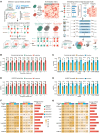
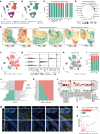
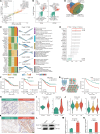
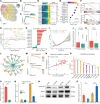


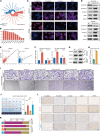

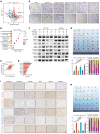
References
-
- Bray F, et al. Global cancer statistics 2022: GLOBOCAN estimates of incidence and mortality worldwide for 36 cancers in 185 countries. CA Cancer J Clin. 2024;74(3):229–263. - PubMed
-
- Pepper MS. Lymphangiogenesis and tumor metastasis: myth or reality? Clin Cancer Res. 2001;7(3):462–468. - PubMed
-
- Compton CC, Greene FL. The staging of colorectal cancer: 2004 and beyond. CA Cancer J Clin. 2004;54(6):295–308. - PubMed
MeSH terms
Substances
LinkOut - more resources
Full Text Sources
Medical

